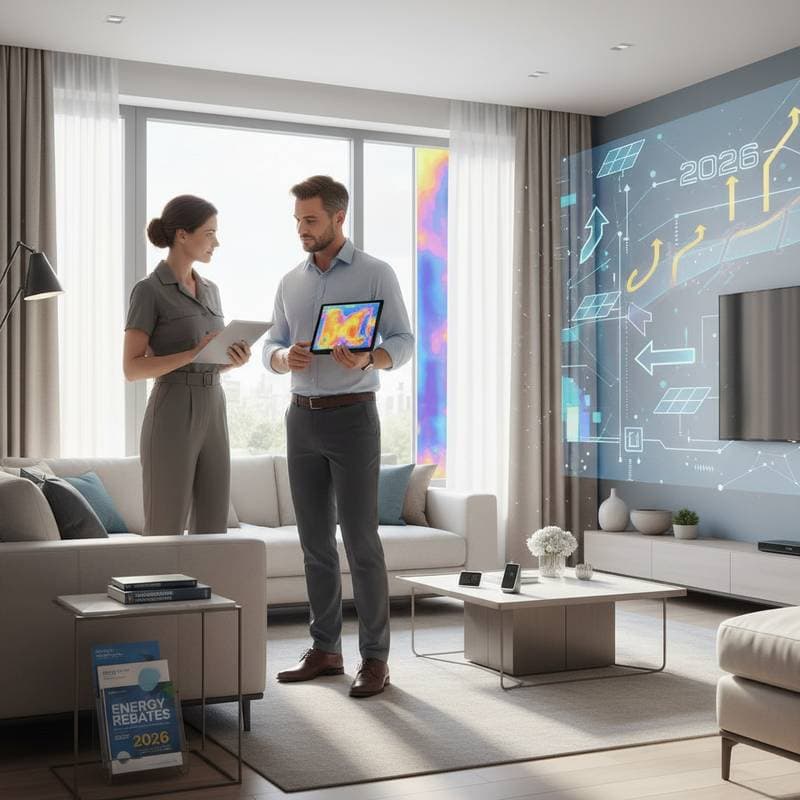Phase-Change Windows: Revolutionize Your Energy Savings by 2025
Imagine a sweltering summer day, sunlight pouring through your windows, driving up indoor temperatures and forcing your cooling system into overdrive. Now, envision windows that adapt on their own, blocking excess heat when it is hot and welcoming warmth when it is cold, all without a single adjustment from you. This innovative solution, known as phase-change windows, is set to redefine energy efficiency in homes, promising to cut heating and cooling costs by 20 to 40 percent within the next few years.
How Phase-Change Windows Work
Unlike traditional windows that remain static regardless of weather, phase-change windows utilize smart materials to respond dynamically to temperature shifts. At their core lies a phase-change material, often abbreviated as PCM, which transitions between solid and liquid states at specific temperatures. When heat builds, the material absorbs it by changing state, storing energy; when temperatures drop, it releases that stored warmth back into your space.
In practical terms, this means the window can shift to a reflective state on scorching days to minimize heat gain, or become more transparent during chilly weather to allow natural sunlight to warm your home. This passive regulation reduces the need for mechanical heating or cooling, offering a seamless way to maintain comfort.
The Technology Driving the Change
Phase-change windows often incorporate microencapsulated PCMs within glass coatings or interlayers, functioning as tiny thermal batteries. These capsules harness latent heat, the energy absorbed or released during a phase transition, to stabilize indoor temperatures without active intervention. Scientists are fine-tuning these systems with materials like paraffin waxes or organic polymers, each with unique melting points to suit diverse climates and building requirements.
This adaptability makes the technology ideal for varied environments, whether you face harsh winters, blistering summers, or fluctuating seasonal conditions. The result is a window that not only insulates but also actively modulates energy flow based on external conditions.
Impact on Household Energy Costs
Windows account for a significant portion of residential energy loss, contributing to nearly 30 percent of heating and cooling expenses in many homes. Phase-change windows address this directly, with studies indicating they can lower cooling demands by 25 to 35 percent and heating needs by 15 to 25 percent, depending on your region. For the average household, this translates to hundreds of dollars saved annually.
While upfront costs range from 40 to 80 dollars per square foot, compared to 10 to 20 dollars for standard double-pane options, the investment often pays off within 5 to 7 years through reduced utility bills. Additionally, many areas provide tax credits or rebates for energy-efficient upgrades, further easing the financial burden.
Comparing Window Options for Your Home
To understand the value of phase-change windows, consider how they stack up against other technologies:
| Window Type | Heat Regulation | Energy Savings | Cost (per sq. ft.) | Maintenance |
|---|---|---|---|---|
| Single Pane | Poor | Minimal | 6 to 12 dollars | Low |
| Double Pane (Low-E) | Moderate | 15 to 20% | 10 to 20 dollars | Low |
| Triple Pane | High | 20 to 25% | 18 to 30 dollars | Low |
| Electrochromic (Smart) | Adjustable | 20 to 30% | 50 to 100 dollars | Moderate |
| Phase-Change Windows | Automatic | 20 to 40% | 40 to 80 dollars | Low |
Unlike electrochromic windows that require electrical inputs, phase-change options operate passively, eliminating the need for wiring or manual controls, which simplifies installation and upkeep.
Ideal Scenarios for Installation
Homeowners stand to gain the most from phase-change windows in specific settings. South-facing windows, often exposed to intense sunlight, can significantly cut cooling costs with this technology. Large glass facades or floor-to-ceiling designs also benefit, maintaining views while controlling solar heat. For those in regions with extreme seasonal shifts, these windows adapt effortlessly, providing year-round efficiency.
Incorporating them during new construction or major renovations proves most cost-effective, though retrofitting remains an option for existing structures. Assessing your home's layout and exposure will help determine the best placement for maximum impact.
Overcoming the Cost Barrier
The primary hurdle for many is the initial investment, as phase-change windows cost notably more than traditional glazing. However, long-term savings, coupled with government incentives for sustainable upgrades, often offset this expense. In commercial settings, these windows can contribute to green building certifications, enhancing property value.
Experts project that as production scales, prices will decrease, making the technology more accessible. For now, evaluating local energy rates and available rebates can help you gauge the true cost versus benefit for your situation.
Insights from Industry Leaders
Materials scientists highlight the passive nature of phase-change windows as a key strength. One researcher noted, "These systems react naturally to temperature, requiring no sensors or power, which ensures reliability and minimal maintenance." Architects, too, appreciate the design flexibility, as these windows reduce reliance on external shading, preserving natural light and aesthetics in energy-efficient homes.
Navigating Potential Challenges
Despite their promise, a few obstacles remain. Durability testing is ongoing to confirm performance over thousands of phase cycles, and market availability varies by region, potentially limiting access for some. Yet, rapid advancements in research and manufacturing are addressing these issues, paving the way for broader adoption.
Planning Your Energy-Efficient Upgrade
If you are considering phase-change windows, start by assessing your home's energy performance through a professional audit, often available at low cost through utility providers. Factor in your local climate, as areas with significant temperature swings yield greater benefits. Research regional incentives to reduce upfront costs, and consult with contractors experienced in advanced glazing for tailored advice. Comparing this option with alternatives, such as enhanced double-pane windows paired with shading solutions, ensures you make an informed choice.
By taking these steps, you position your home at the forefront of energy innovation, turning a simple architectural element into a powerful tool for savings and sustainability.










